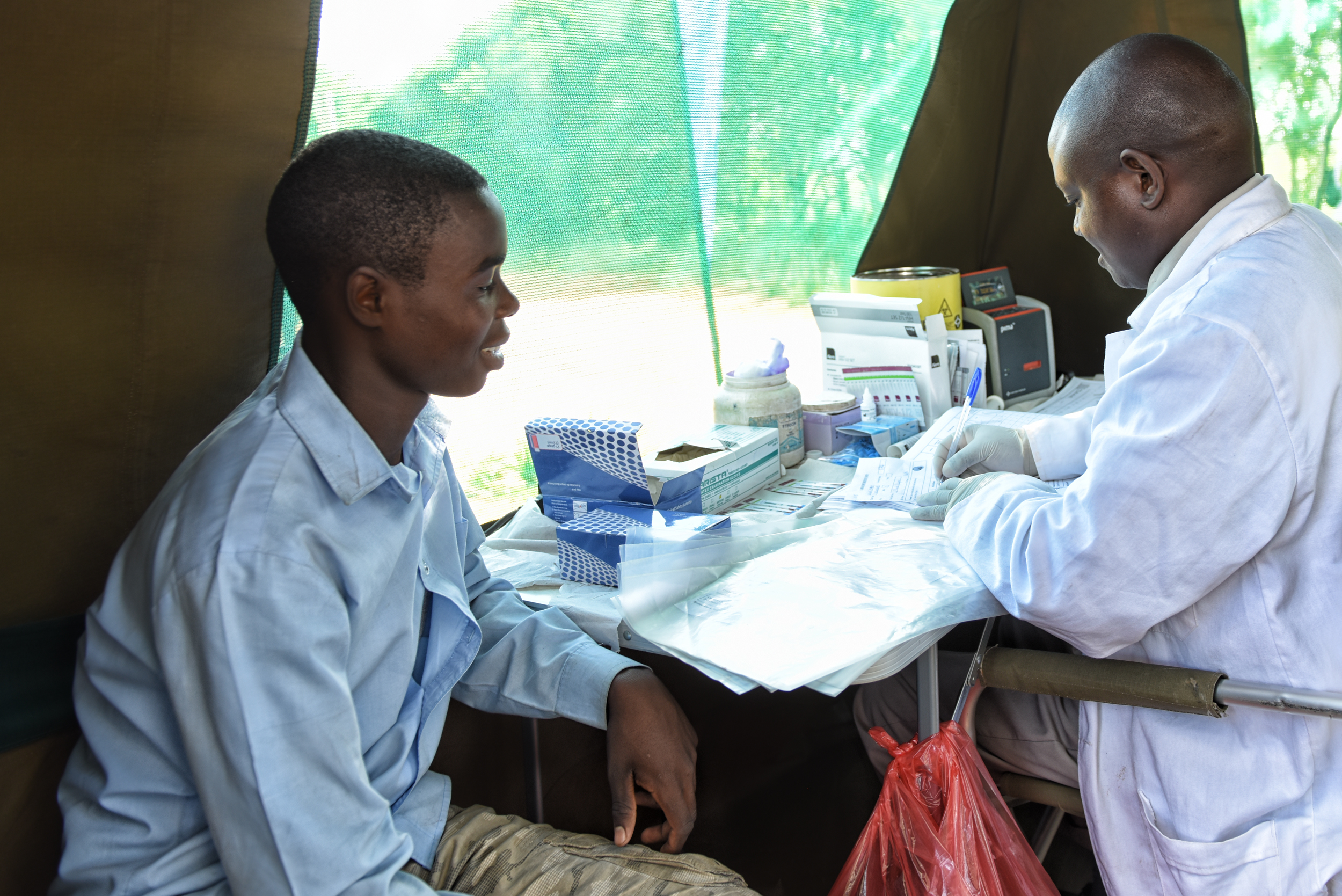
/global-hiv-hepatitis-and-stis-programmes-(hhs)/community-testing-in-can-tho-viet-nam.tmb-768v.jpg?sfvrsn=6de039d3_2)
Quality Management Systems for non-laboratory settings
Toolkit to support countries in implementing the minimum package of quality management systems activities.
A community HIV, syphilis and hepatitic C testing by volunteers in Can Tho, Viet Nam
OverviewThis toolkit provides practical guidance, tools, and resources to support countries in implementing the minimum package of quality management systems (QMS) activities in non-laboratory (non-lab) testing sites. It focuses on qualitative serological Rapid Diagnostic Tests (RDTs) – such as HIV, hepatitis B and C, and syphilis RDTs – performed in non-lab settings. It is designed to be used by the testing providers in non-lab settings and key stakeholders, such as national and subnational quality assurance officers and testing site supervisors involved in ensuring the quality of serology testing, particularly in low-resource settings. |
Background
Decentralization of testing services and task sharing have been critical interventions to increase access to diagnostics. Now that countries adopt these interventions and expand testing and diagnostics services, it is very important to ensure the quality of testing by implementing QMS in all testing locations (in laboratories and non-laboratory settings) and by all testing providers (laboratory technicians or trained lay workers).
Non-lab settings refer to all testing activities performed outside of the laboratory. These settings include medical services/departments (out- and inpatient departments, antenatal care, etc.), specific clinics (tuberculosis, sexually transmitted infections, nutrition, etc.), and community-based testing, including home-based testing.
A survey conducted in 2023 with country representatives from WHO African Region, key informants, technical and financial partners highlighted the difficulty for non-externally supported low- and middle-income countries to implement existing QMS guidance and tools. Participants requested WHO to simplify those approaches and proposed a multi-disease QMS toolkit adapted to non-lab settings. WHO led the development of this non-lab QMS toolkit with the support of a steering committee composed of WHO and external experts from different organizations, as well as countries’ representatives.
QMS guidance adapted to non-laboratory settings
In this toolkit, existing QMS guidance documents and tools have been adapted to answer the specific needs and constraints of non-laboratory settings in low- and middle-income countries (LMICs) by simplifying the 12 Quality System Essentials used in laboratories (Laboratory Quality Management System Handbook and Training Toolkit) to 6 pillars. Altogether, they represent the minimum set of QMS activities that must be implemented in each testing site to ensure the quality of testing activities.
Key references
This toolkit aims to enhance the existing QMS guidance and tools, including:
Rapid Test Continuous Quality Improvement (RTCQI)
ISO standard for Medical Laboratories – Requirements for Quality and Competence (ISO 15189:2022)
Laboratory Quality Management System Handbook.
Where context and resources permit, countries are advised to refer to these documents to implement the complete recommended package of QMS activities.
Simplification of the 12 Quality System Essentials used in laboratories to 6 pillars
/global-hiv-hepatitis-and-stis-programmes-(hhs)/adaptation-of-qms-guidance-on-testing-services-to-non-lab-settings.tmb-340v.png?sfvrsn=4ccd36e4_2)
6 pillars of the non-lab QMS toolkit
Organization, governance and planning |
Strategic and management component, including definition of responsibilities and network structure, resource allocation and development of policies and standards. Tools available: financial planning, regulation of IVDs, non-laboratory settings conditions, coordination mechanisms, national engagement framework. |
Workforce development |
An adequate number of qualified and trained staff at all stages of the health pyramid is one of the cornerstones to ensure quality testing. Defining the roles and responsibilities within job profiles for each person within defined national testing and QA networks is crucial to ensure the day-to-day quality of testing. Tools available for: Health workforce governance (role, responsibilities, coordination mechanism) and strengthening HR capacities (training, competency-based assessment, and authorization of practice and supervision) |
Supply chain and inventory management |
Effective procurement, supply chain, and inventory management, from national logistic centers to testing sites, is essential to ensure timely availability, quality, and efficiency in delivering diagnostic services. A well-managed supply chain can quickly adapt to changes in demand, such as during an outbreak or epidemic, ensuring a rapid response. Tools available: Defining testing site needs (alert, buffer stock, average monthly consumption calculation, order form template), Managing inventory at testing sites level (stock card, inventory management templates, temperature monitoring log sheet) |
Process control and assessment |
This pillar outlines the processes for quality control (internal and 3rd party), external quality assessments (Proficiency Testing scheme and site supervision visits), and continuous quality improvement. Data collection, regular review, and analysis in the testing site are also discussed. Tools available: for implementing quality control measures, external quality assessment programs and continuous quality improvement. |
Documents, records and information management |
This pillar focuses on the documents and records that should be available in each testing site and provides practical tools for data collection, review, analysis, and use of data in ensuring quality assurance. Available tools: SOPs, testing registers, indicator forms and M&E forms that should be available in each testing site and practical tools for data collection, review, analysis, and use of data in ensuring quality assurance. |
Post-market surveillance |
This pillar focuses on the comprehensive documentation of any product problems (e.g., quality, safety, performance) at the testing site to ensure information can be forwarded in a timely manner to manufacturers for post-market surveillance, or to national regulators.
|
Related testing toolkits

Contact
Global HIV, Hepatitis and Sexually Transmitted Infections Programmes
World Health Organization
20, Avenue Appia
1211 Geneva, 27 Switzerland
Related information
Disclaimer
The provision of materials and links from the toolkit to other websites is provided for your convenience and does not indicate endorsement of those materials or sites by WHO. WHO accepts no responsibility for the validity or accuracy of their content. The mention of specific companies or of certain manufacturers' products does not imply that they are endorsed or recommended by WHO in preference to others of a similar nature that are not mentioned. Errors and omissions excepted, the names of proprietary products are distinguished by initial capital letters.

/global-hiv-hepatitis-and-stis-programmes-(hhs)/nbt-toolkit-banner.png?sfvrsn=e613817f_3)
